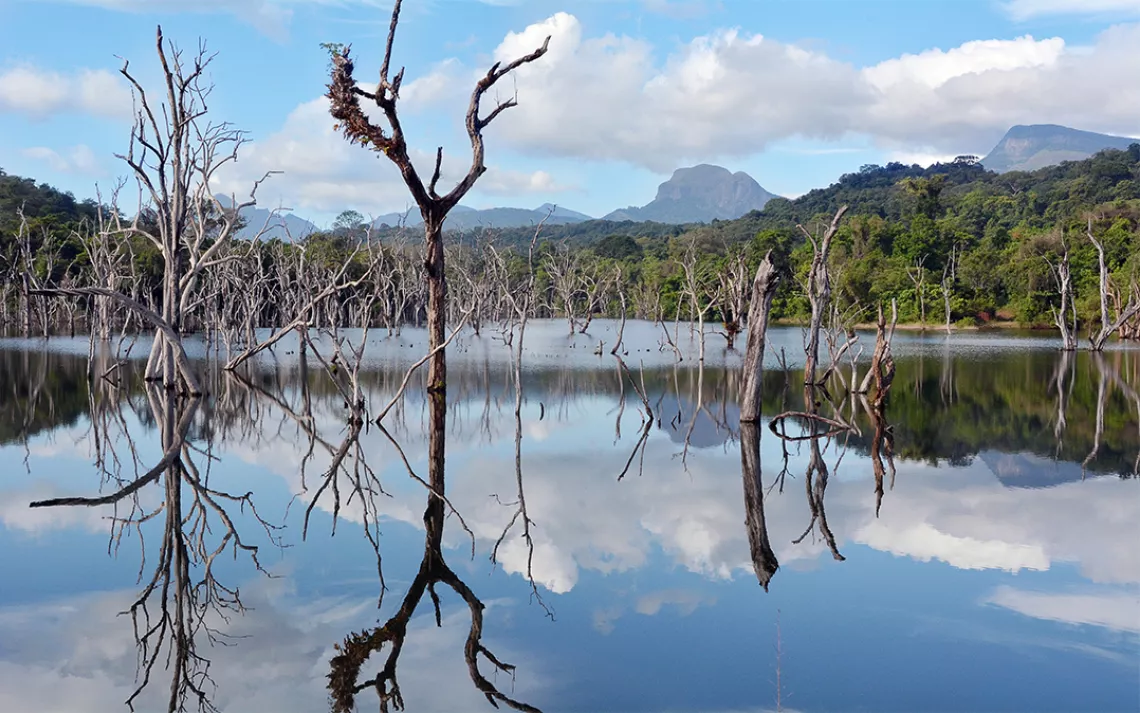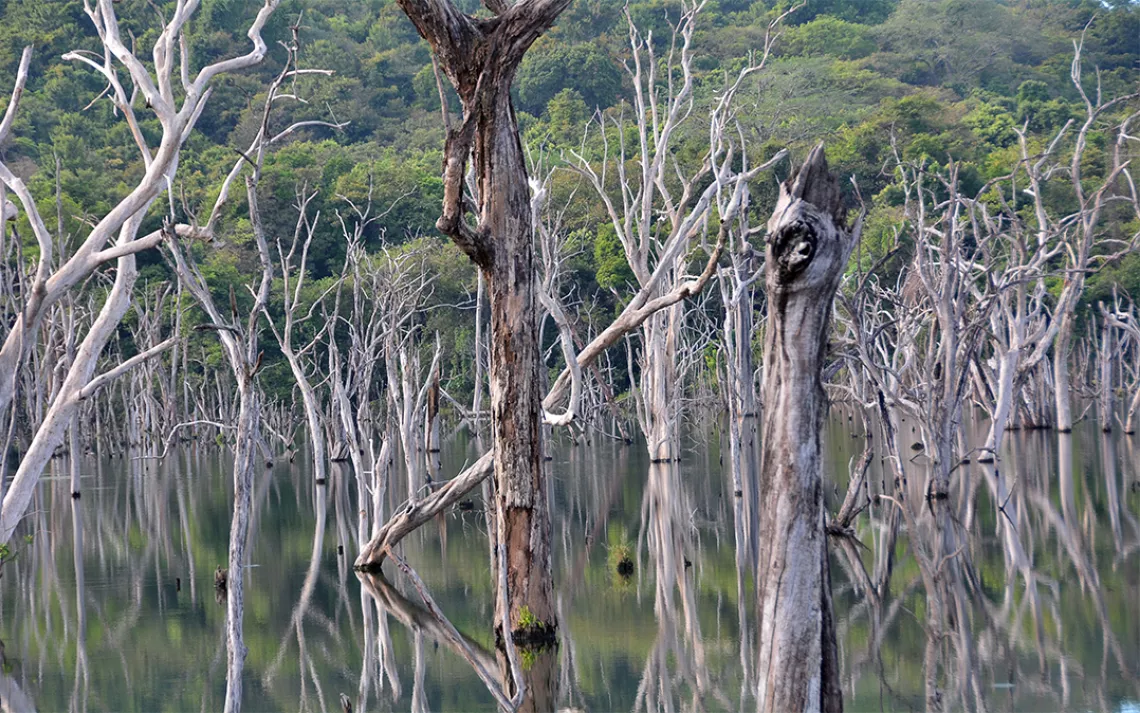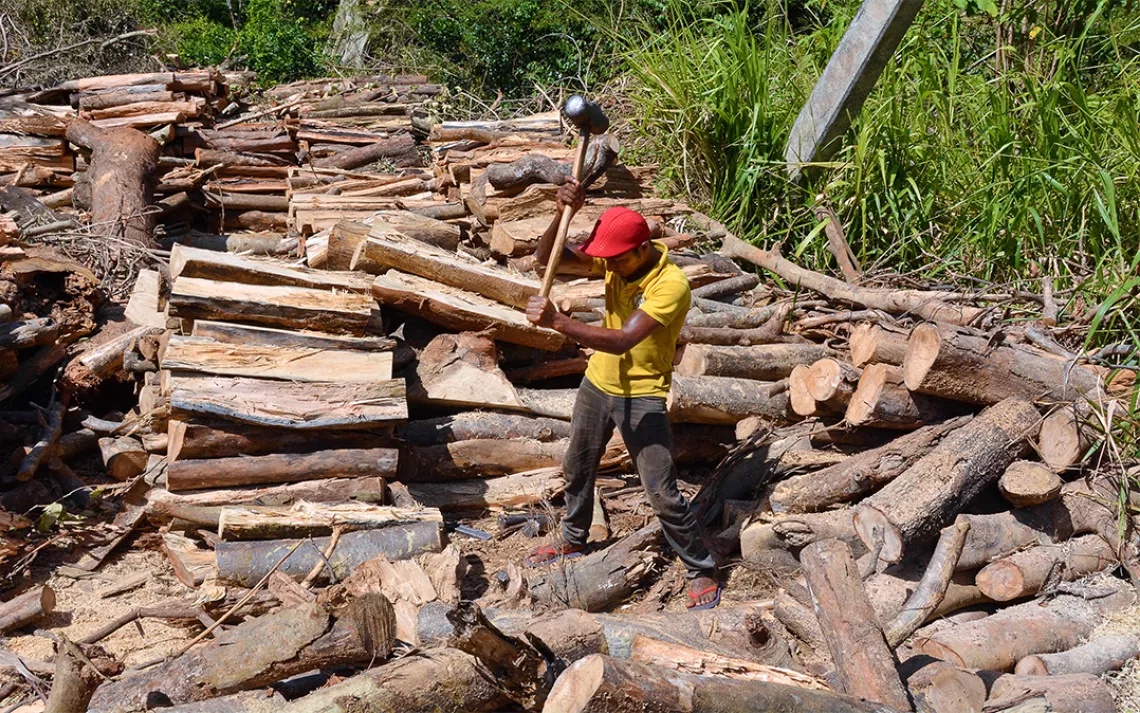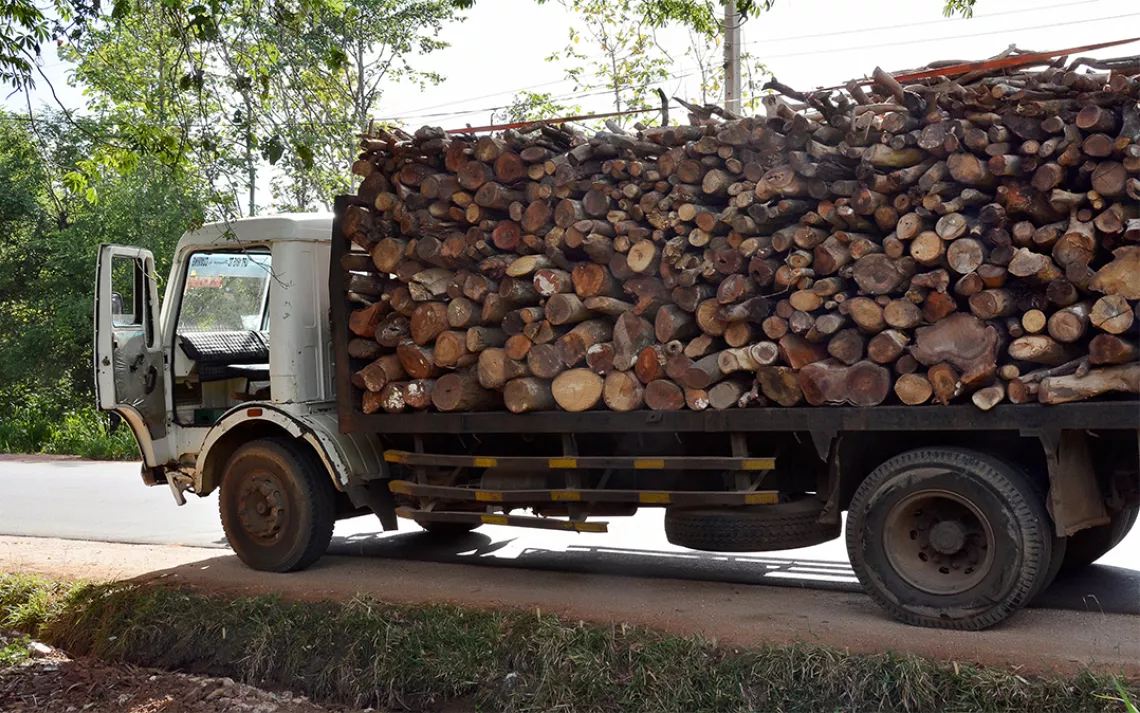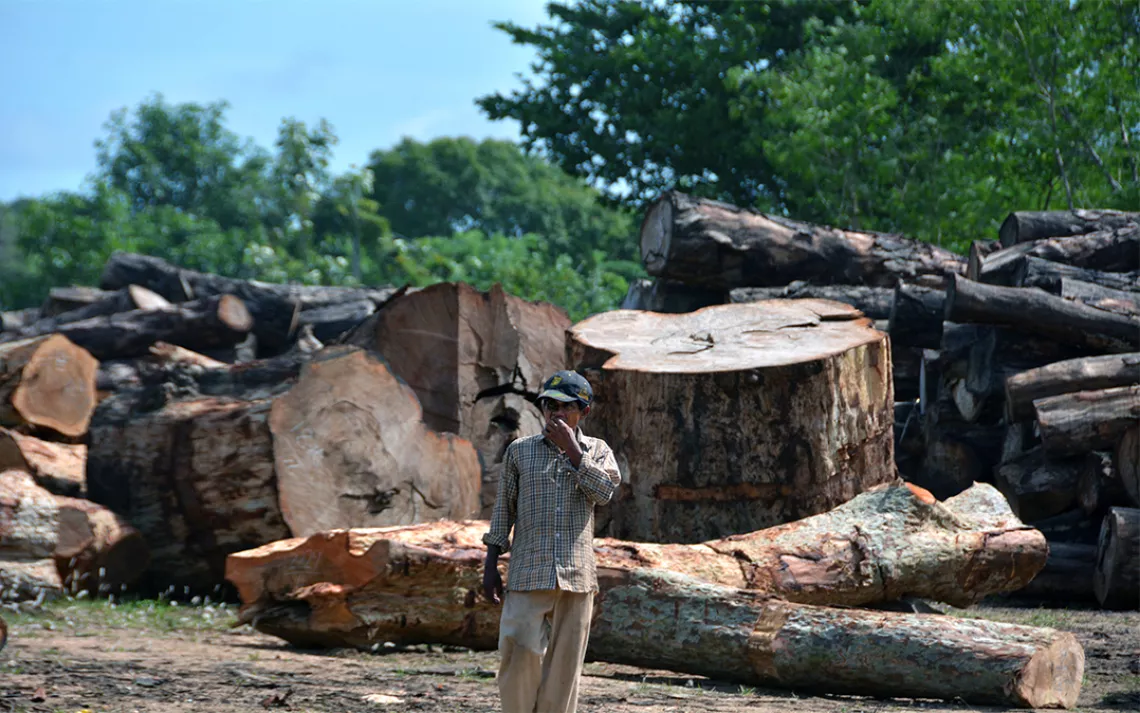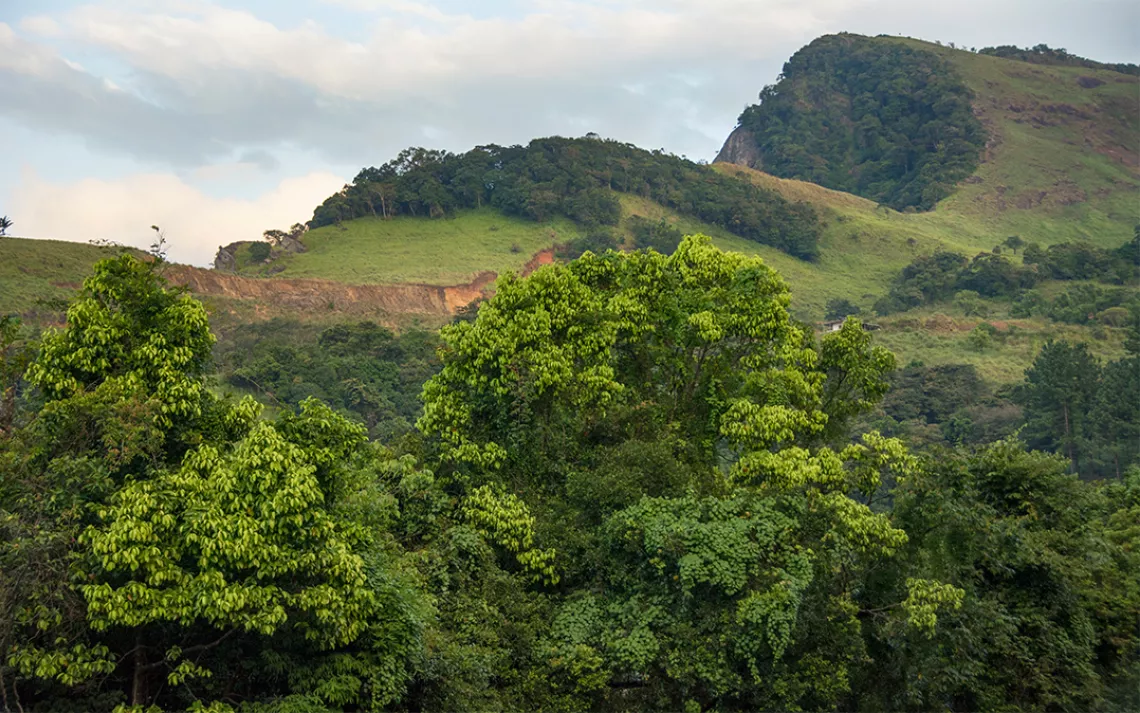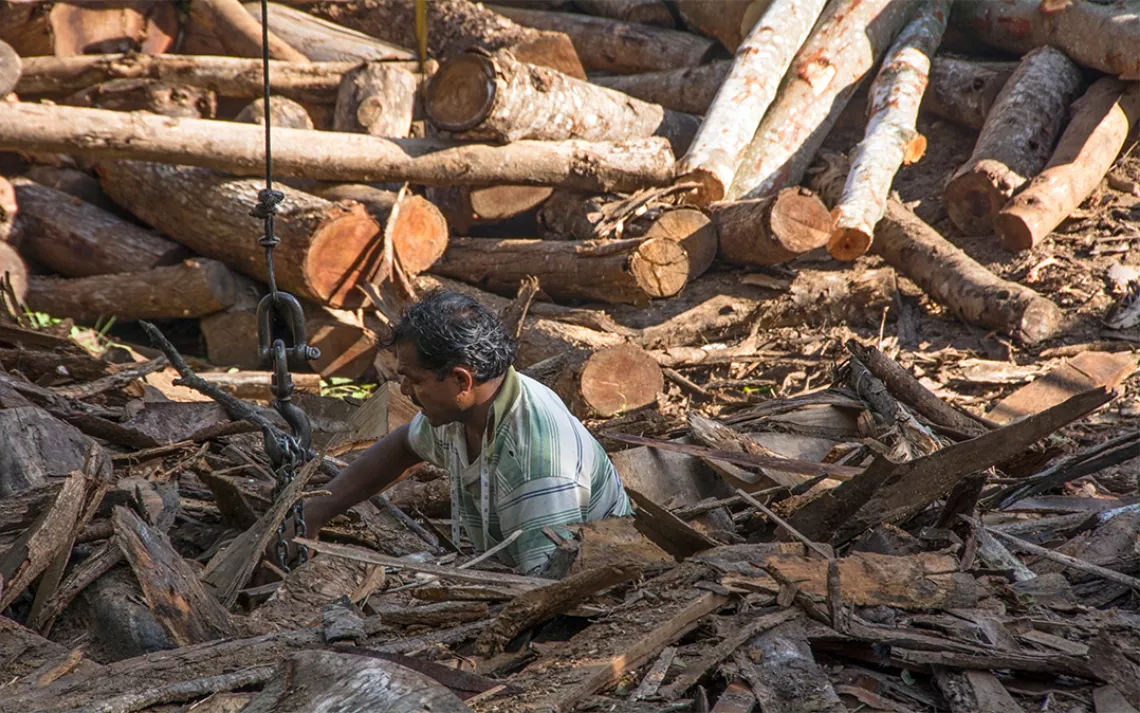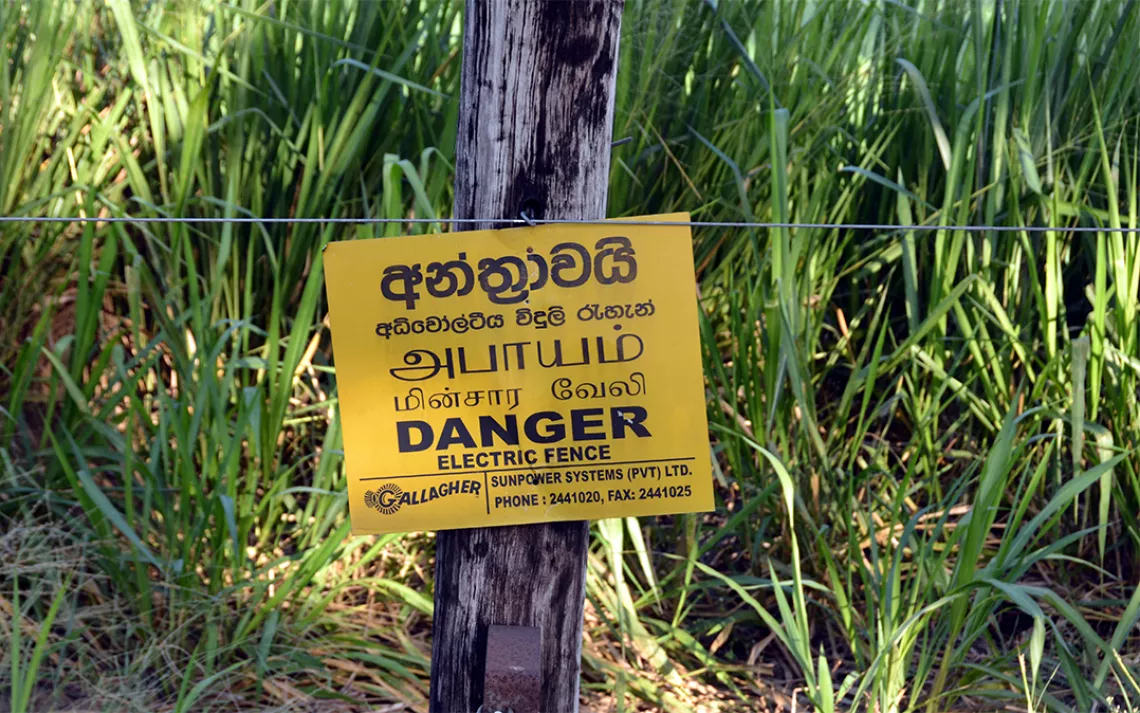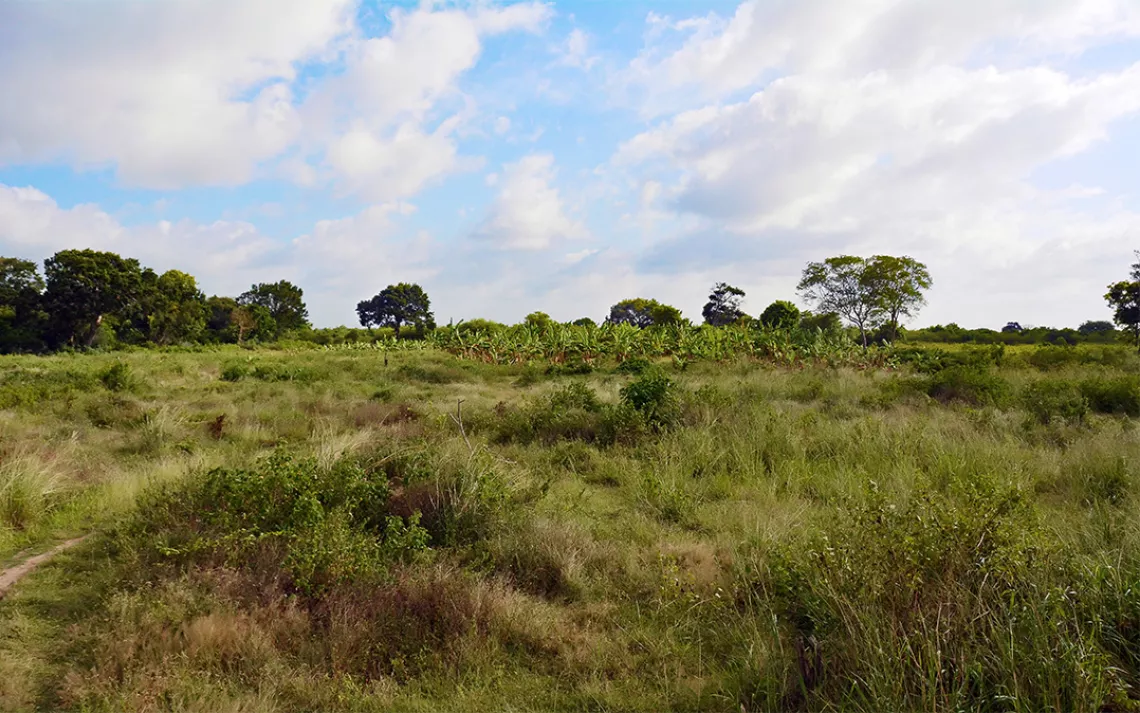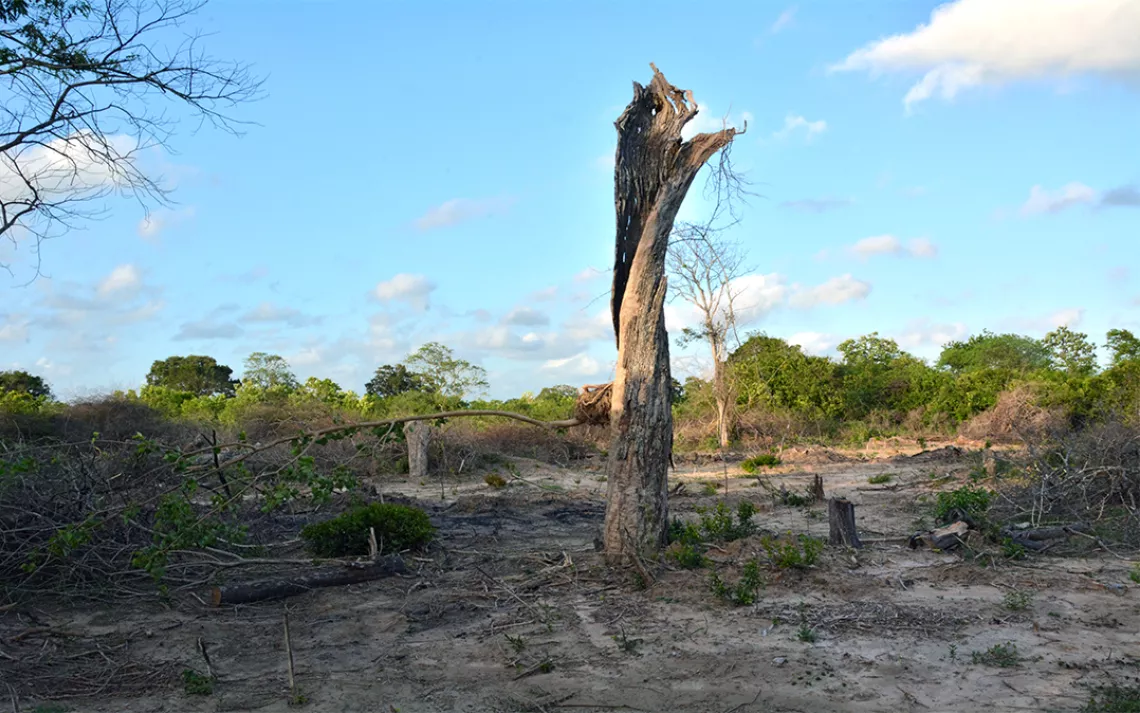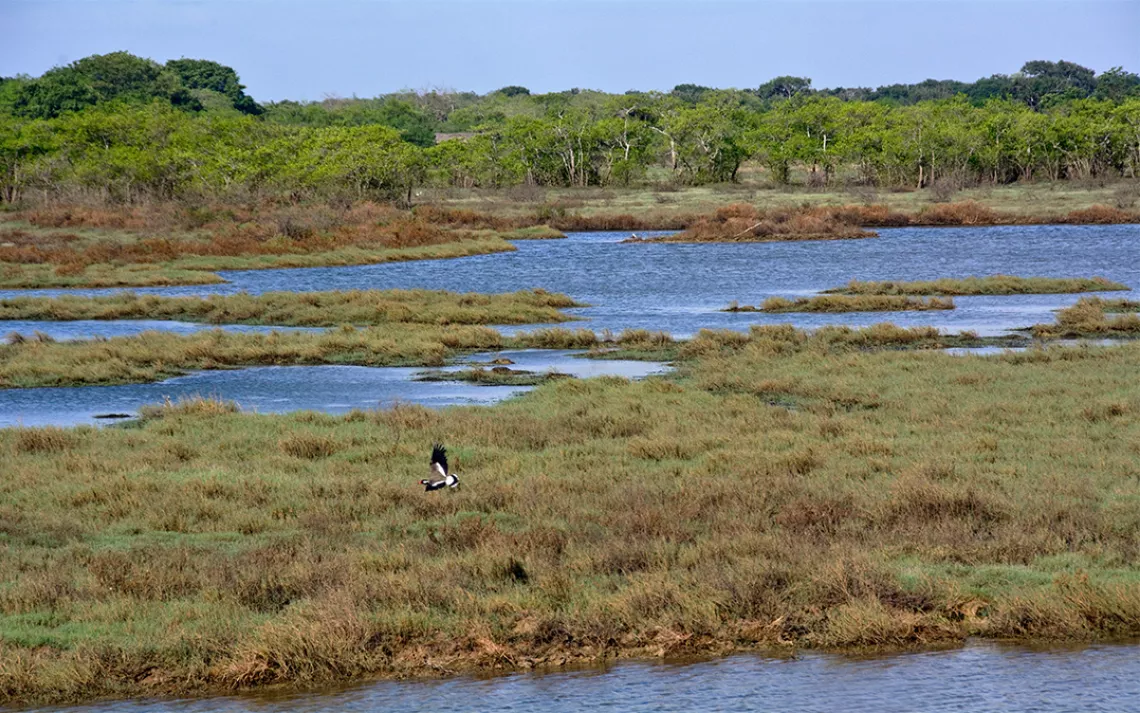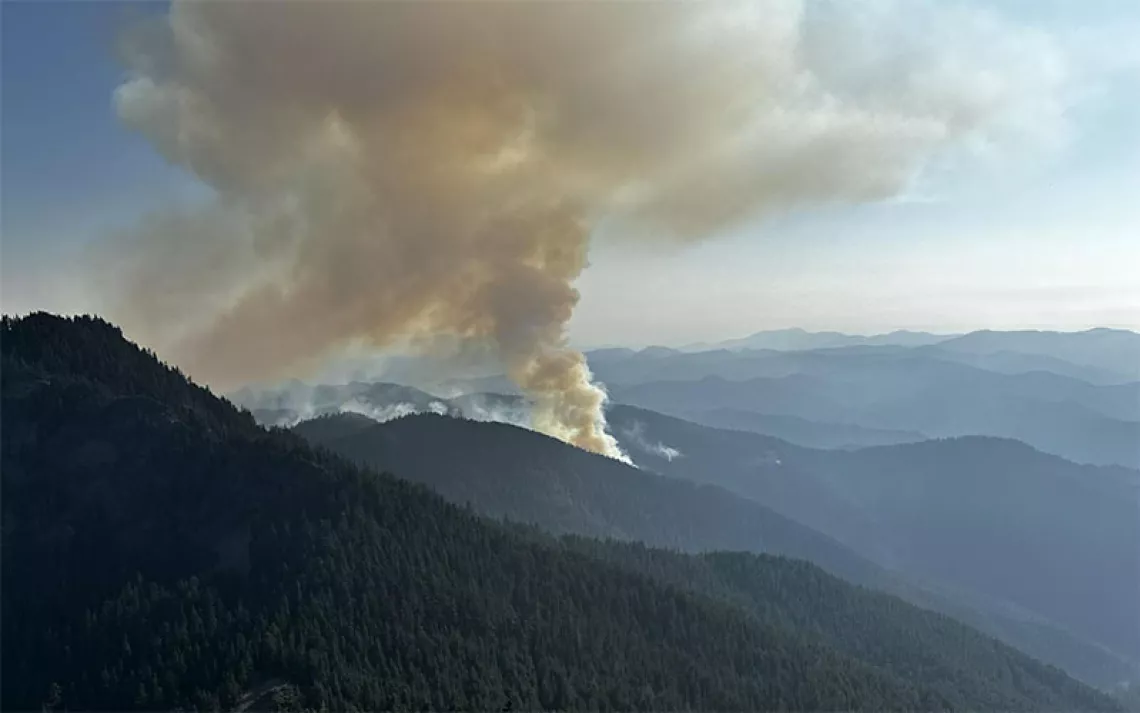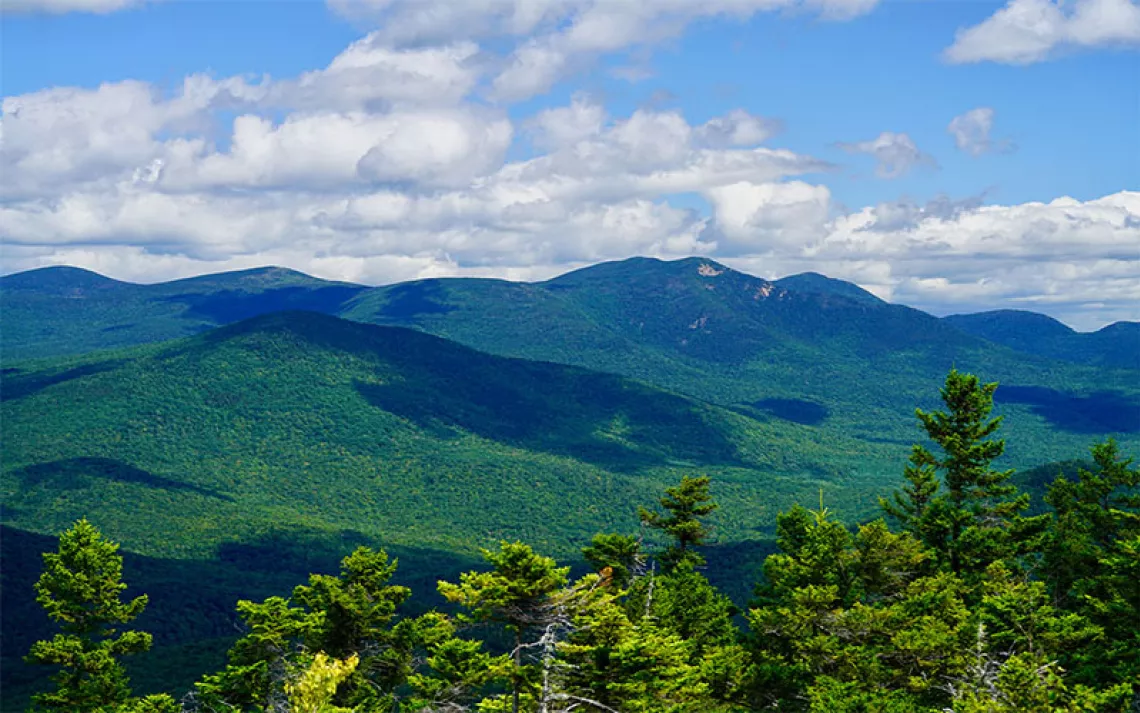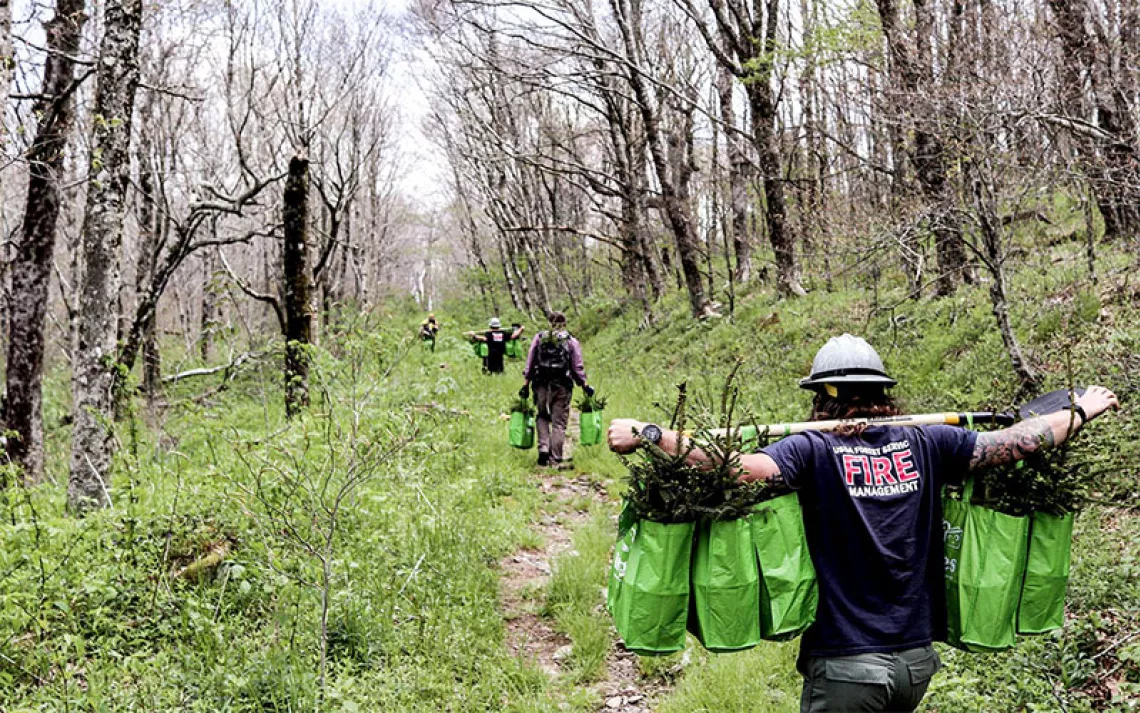Deforestation in Peacetime, Sri Lanka
Photos by Kevin Gass
At a small banana farm outside Eluvankulam, a west coast town in Sri Lanka, 60-year-old Rajah Inguruwatlege recently cleared away at least 10 acres of forest. The land belongs to him, and the action was completely legal. Few in Sri Lanka would begrudge him, even though it scrapes a tiny bit more native tree cover from this verdant island. His biggest problem, in fact, is the roaming elephants—increasingly chased out of their native habitat by deforestation.
“I have an electric fence, but it doesn’t have enough power to keep them away,” he says. “The neighbors haven’t cleared their land so I can’t see them coming. Nobody is making any effort to change it.”
Inguruwatlege was holding a paper tube of dynamite as he spoke. The jerry-built charge—distributed by the national Forest Department—was not intended to hurt the elephants but to create a deep bass explosion that frightens them away and keeps them from trampling the crops. He tries to avoid yelling at the stray pachyderms because he believes it only riles them up. The best strategy, he says, is to ask them politely to leave and keep tossing the dynamite.
This is only one front in the slow-moving push to defoliate Sri Lanka since 2009, when a three-decade civil war pitting the government against a band of Tamil-speaking rebels came to an end. The Liberation Tigers of Tamil Elam (LTTE) were the bloodthirsty inventors of suicide bombing as a military tactic, but they had strict rules against cutting down trees, mainly because the forest gave them cover for guerilla activities. Government forces cleared some patches but were generally reluctant to launch Vietnam-style napalm or herbicide raids against their own land. The war perversely kept Sri Lanka’s trees, if not human lives, in a state of preservation.

Banana farmer Rajah Inguruwatlege, age 60.
In the last seven years of peacetime and an improving economy, however, more farmers like Inguruwatlege hope to expand their holdings, and more small-scale loggers are taking down mahogany trees one by one for a little extra household profit. Collecting household firewood from public forests is legal, which also creates a loophole for those looking to take more than they should. Each individual case of thievery is small by comparison, but the cumulative effect of the post-war prosperity on the forests across the island has been noteworthy. According to a United Nations report, Sri Lanka now has a tree cover of 29.7 percent, down from nearly 70 percent in the early 1800s. Under British colonial rule in the following decades, vast carpets of forest that used to cover nearly three-quarters of the island were cleared to grow the famous Ceylon tea. Less than 1.5 percent of this original growth remains.
About 7,000 hectares (17,297 acres) continue to disappear each year. Satellite photos tell a story of green cover being chipped away by dribs and drabs with no one locus of destruction—much like a case of low-grade measles. Experts cite the small-scale agricultural encroachments as the major cause, followed by big infrastructure projects like a series of dams being built by Chinese companies in the center of the island. A good portion of the “green cover” on the island now comes from artificial growth like coconut or rubber plantations, plus the myriad household gardens that speckle the countryside. They appear lush, but they mask the loss of the giant artocarpus heterophyllus and myristica fragrans that help give habitat to more than 3,500 species of flowering plants and 160 kinds of reptiles.
The deforestation doesn’t just kill other plants and send more elephants wandering. It creates bald patches of soil on the hillsides, which in turn causes landslides and sheets of water cascading through villages during the summer monsoons. Rivers are running slower and lower because of the buildup of sediment in their channels. “What we have is a collective effect of flooding caused by deforestation,” says Ananda Mallawatantri, the country representative for the group IUCN.
What seems clear to the advocates working on the problem is that passing more laws isn’t the answer. A good part of the loss of green cover is happening on private lands like Inguruwatlege’s banana farm, where the government can’t dictate terms. And there are already detailed guidelines on which public lands can be farmed or logged, and under what terms.
“We have excellent deforestation laws in Sri Lanka. They are comprehensive,” says Professor Praveen Abhayaratne, the coordinator of the Federation of Environmental Organizations. “The issue is the implementation on the local level. It’s weak because of lack of capacity, as well as the corruption. The simple answer is to enforce the law. That’s why fixing this problem is so tough.”
Lack of political will can be aggravated by an even more human factor: local officials sympathetic to poor farmers for whom an extra bit of cropland can make a huge difference in feeding their families. An extra half acre of tea, for example, makes a family relatively wealthy. The police are said to rely on anonymous tips from local observers to ferret out land piracy, but neighbors can be reluctant to snitch on one another. Over time, the bald patches add up. “You don’t think one farmer clearing half an acre is going to have an impact,” Abhayaratne says. “But over time, it does.”
At the federal forest department, housed in a sweltering motel-like structure near the national parliament, officials agree that much more could be done to prevent trees from being bulldozed or planed into boards. But they insist they have plans to bring the tree cover back to 32 percent, a goal readjusted from the initial call of 35 percent cited in the UN report. They plan to get there through better monitoring of forest fires, though there is no specific plan to increase the budget for local oversight of illegal land clearing.
“We have the manpower. The military helps us, if necessary,” says Sarath Kulatunga, who as the Additional Conservator General is the second-in-command of the department.
He also denied the frequently levied charge that the government is in the bad habit of strategically “releasing” public forest property for development as favors to local potentates. “Requests are coming,” he acknowledges. “But that’s not a problem. We don’t feel much pressure from politicians. This subject belongs to the president of Sri Lanka.”
The new administration, led by President Maithripala Sirisena, has signaled a cutback in the types of massive, foreign-funded megaprojects—like a useless and empty new airport south of the capital city of Colombo—that were a dismal feature of the previous regime led by Mahinda Rajapaksa. His go-fast development program helped create jobs but raised multiple questions about improper payments and caused the destruction of tens of thousands of old-growth trees.
One of those projects he approved was the massive Sino-Hydro dam near Moragahakanda, part of the reported $5 billion that China poured into the South Asian island following the end of the civil war in 2009. Up and down the valley of the Amban River, which the large gravity dam is built to flood, selected acres of forest have been taken down to accommodate the roads and new settlements created by the project and the anticipated boom in real estate. Command-style irrigation like this is a major historic cause of deforestation, according to the UN researchers.
“When the government changes, the policy changes and few politicians really support environmental goals,” says Chamila Weerathunghe, the chief operating officer of the Environment Foundation Ltd. “Government has to please people to stay in power. They are after short-term gains. Slowly we are moving toward destruction.”
Her foundation is in the business of suing individuals and government agencies that encroach on the forests. To date, they have brought more than 400 legal cases but have not made the kinds of gains that stop the bite-size land grabs that pose the biggest threat.
But in those rare cases involving large-scale defoliators, political pressures can be even more effective than legal challenges. After international environmental groups—and reportedly, the U.S. embassy—mounted a protest, the Dole corporation stopped clearing acreage near Somawathiya National Park to plant more bananas. The project would have displaced approximately 400 elephants. Another project to build new villages for Muslims who were displaced during the civil war was halted by the president last year after newspapers reported the project involved massive deforestation inside Wilpattu Jungle Reserve.
That project is close to Rajah Inguruwatlege’s banana farm on Holcin Road, which is in turn nearby a cleared patch of ground where a small village once stood next to a forest. The inhabitants of that town were almost all killed on a night in July 1996 when a band of LTTE fighters—almost all teenagers—crept in to launch a raid to punish some alleged government informers.
A man named Nihal Hetliarachilaye Appahamy remembers that evening. He was coming home from a volleyball game in a nearby town. Light from the setting sun was on his shoulders as he drank with his friends. When the fighters burst into the house he shared with his wife and two children, he had no choice but to let them tie everyone up. One of the thugs ate the dinner of fried eel on the table; another stole his volleyball uniform. He recognized one of the invaders as a childhood friend. Appahamy was able to burst free from the ropes, grab his three-month-old son and run to a nearby police station for help. When he returned, he discovered his wife and child had been killed.
Bloodthirsty acts like this happened all over the north and central regions of the country during the war, but there is nothing left to commemorate this particular attack except a cleared patch of ground where watermelons will soon be planted. On a recent summer afternoon, a local man named K.S. Rames pointed to where the attack had taken place. One of the only other survivors, a diabetic man with no legs, was allowed to crawl away with a small boy smuggled in the wraps of his clothing.
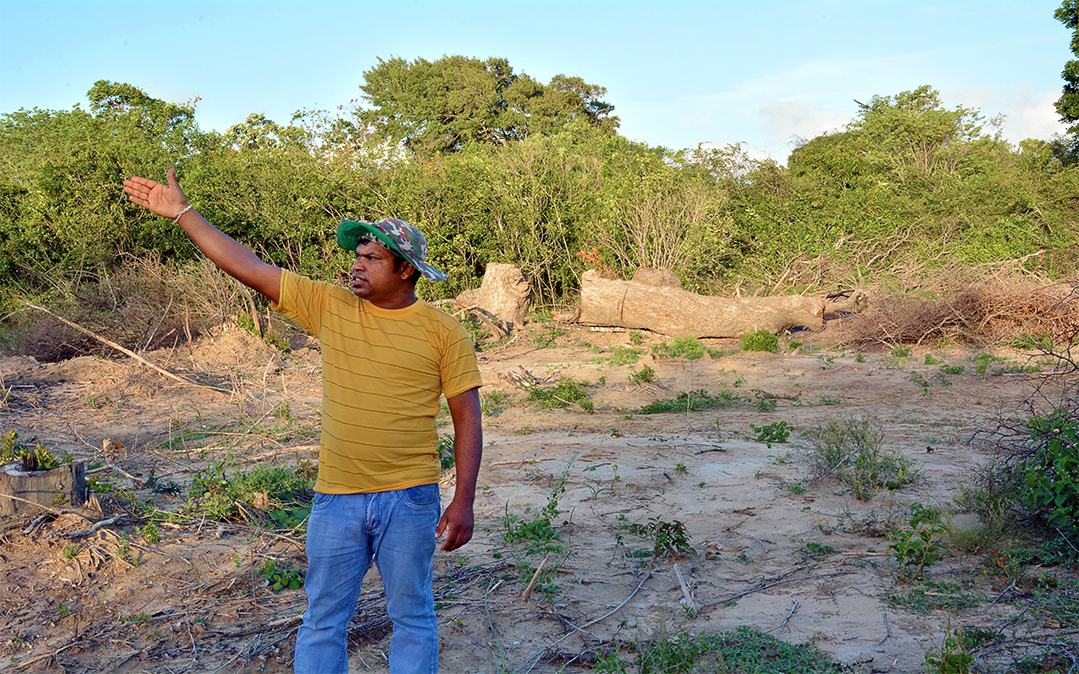
Above: K.S. Rames gestures toward the site of a 1996 slaughter by the Tamil Tigers.
Below: Elephants chased out of their traditional habitats because of deforestation are known to trample crops . . . and sometimes people.
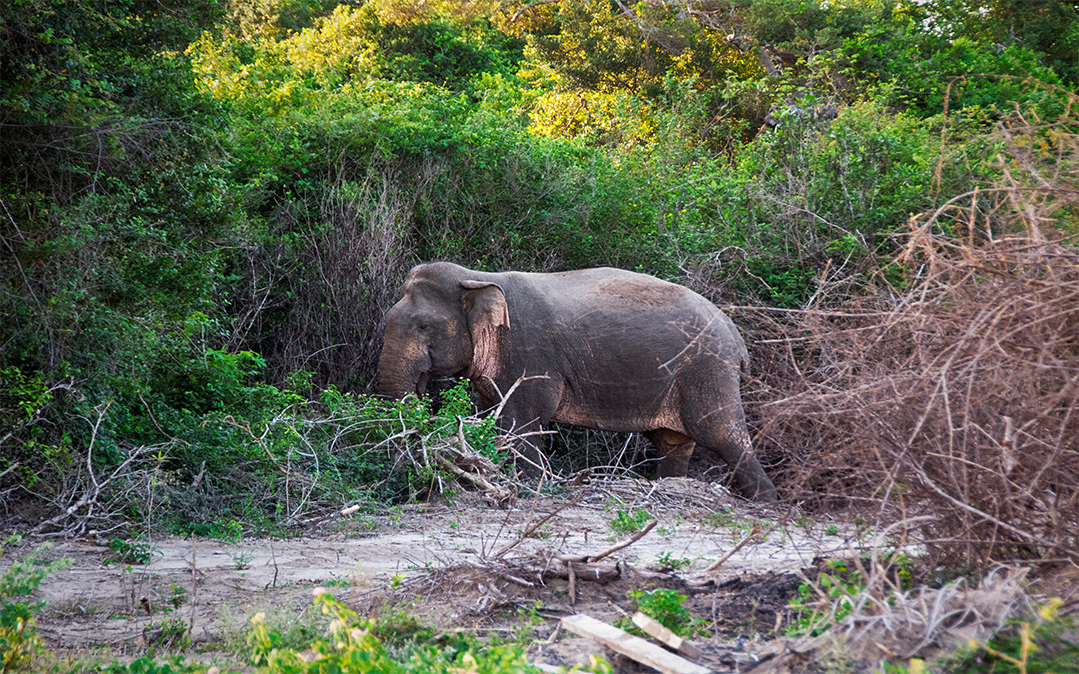
Rames stopped abruptly in telling this story and cocked his ear toward a remaining patch of trees to the west, where the sound of rustling was barely discernable. Without another word, he rushed over to his three-wheeled rickshaw and scooted it down the path and away from the possible charge of an elephant coming his way. While generally placid, elephants have been known to get upset at provocations and rush toward their aggressors with uncompromising force. These “human-elephant conflicts”—the official term used by the Department of Forests—are fatal to an average of 50 people and 100 elephants every year.
Today, though, this elephant was in no mood for trouble. Rames identified her as a female and watched as she mooned around what remained of the 100-year-old forest on the edge of Inguruwatlege’s banana planation. Her eyes were dark as marbles. The banana plantation would only grow, Inguruwatlege had said, and by the following year he hoped to double the acreage under cultivation.
 The Magazine of The Sierra Club
The Magazine of The Sierra Club
